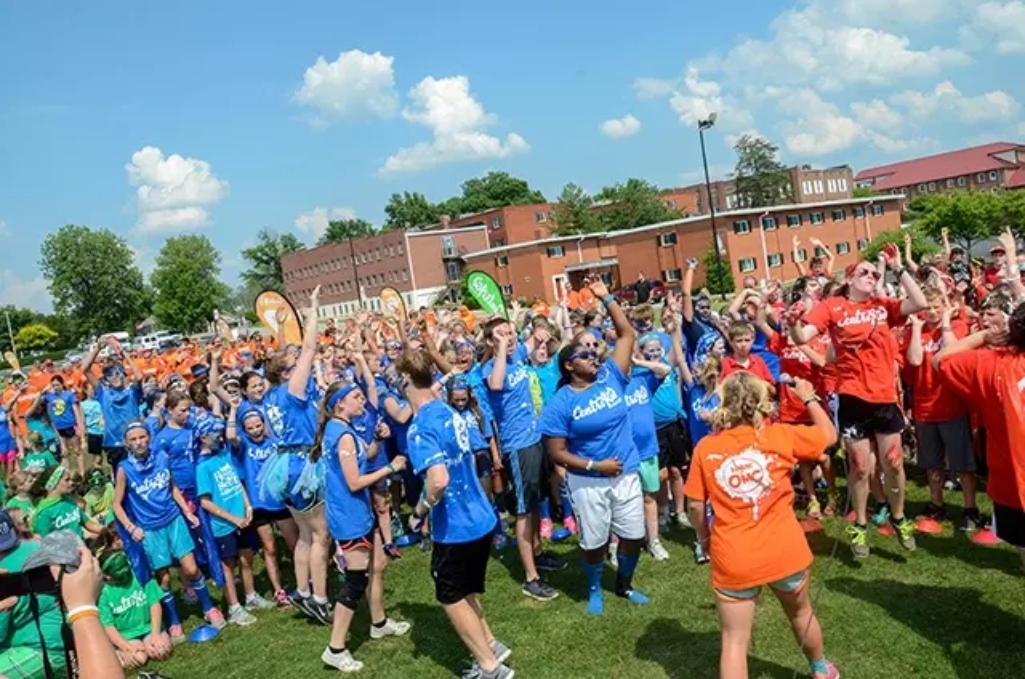Last summer on the final day of VBS, I stood at the back of our worship center with one of our staff members as we scanned the crowd of kids singing and dancing along to the Destination Dig theme song. “It’s awesome that we were able to welcome more kids with special needs than ever before!” he said as he noticed some kids wearing noise-reducing headphones and others interacting with volunteers who were wearing buddy bags.
And it was awesome! But it took some planning ahead of time to make sure they felt welcome and everything ran smoothly. If you want to have your most inclusive, accessible VBS ever this year, I have some tips that will help.
If our VBS gatherings reflect our communities, up to 1 in 5 of the students we welcome for a week each summer will have a physical disability, cognitive disability, learning disability or mental health diagnosis. According to the National Center for Education Statistics, in the 2019-20 school year, 14% of total public-school students (ages 3-21) received special education services under the Individuals with Disabilities Education Act. Add in kids with learning disabilities and mental health or behavior diagnoses who fall under 504 accommodations, and you’re likely close to 20% in your school district.
These students need learning, sensory and behavioral support at school, but they don’t often receive that help at church. This has led to the underrepresentation of children affected by disabilities in our churches, especially hidden disabilities like autism, ADD/ADHD and learning disabilities. A 2018 study found children with autism are 84% less likely to attend church than their peers who aren’t affected by autism. The latest data from the CDC reported approximately 1 in 44 8-year-olds in the U.S. are on the autism spectrum. That’s a significant number of students we aren’t seeing on Sunday mornings.
The good news is churches can glean from this mission field of families. And welcoming all children to VBS this summer is a great way to start!
Here are three steps your church can take to reach families affected by disabilities and welcome them to VBS:
1. Add a question to your VBS registration form that communicates you’re prepared to welcome kids with disabilities
Ours says, “Does your child have an allergy, special need, learning disability or behavioral diagnosis you’d like to share so we are prepared to help him/her feel as safe and comfortable as possible?” Combining these options shows parents we aren’t making judgments about any of these additional needs. But it also shows we want to be prepared to serve their family well.
If they answer with a diagnosis, we follow up to ask more questions. We ask what supports the child has at school and home that we may be able to adapt for church. For example, if a child has dyslexia, we tell the teachers and ask them not to call on him to read aloud. If the child has a sensory processing disorder, we offer noise-reducing headphones during our large group worship time. This allows the child to participate without feeling as overwhelmed. Asking what works for the child helps make his or her time at church less stressful.
2. Equip teen and adult buddies to come alongside kids who benefit from extra attention and help
We model this after the partnership between Moses and Aaron in Exodus 4. God called Moses to speak before Pharaoh, but Moses responded, “my mouth and my tongue are sluggish” (v. 10b, CSB). In verses 14-16, God told Moses his brother Aaron would be with him as a helper, speaking when Moses couldn’t. The calling God had for Moses stayed the same. But God made modifications to the way Moses fulfilled his calling by providing a helper. Similarly, our buddies serve as helpers so our friends with special needs can fulfill the callings God has put on their lives.
Our buddies can be one-on-one helpers or present in the classroom to help anyone who may need it. They carry buddy bags with fidgets, a visual schedule, noise-reducing headphones and other items that may be helpful depending on the child’s specific needs. The buddies can also help with academic work and navigating social situations. You can learn more about recruiting, training and supporting buddies on the Southern Baptist of Texas Convention’s website.
3. Have spaces designated for sensory breaks
Sometimes students have too much energy and need a place to get that energy out. Sometimes they’re overwhelmed by sensory input and need a place to relax and feel calm again. We have sensory rooms that can meet both needs, but every church can create a place for sensory breaks: the playground swings, a hallway where they can take a walk or a quiet corner with a comfortable rug and soft pillows. I have a Pinterest board with ideas for sensory rooms and spaces that any church could adapt.
We want families to feel welcome in our churches, so we take steps to make their kids with special needs comfortable at VBS. Then they can hear, understand and respond to the gospel. Making VBS inclusive and welcoming is a great first step to reaching these families!
(EDITOR’S NOTE – Sandra Peoples is a Ph.D. student at Southwestern Baptist Theological Seminary and a special-needs mom and sibling. She is also the special needs ministry consultant for the Southern Baptist of Texas Convention and the author of Unexpected Blessings: The Joys and Possibilities of Life in a Special-Needs Family.)

